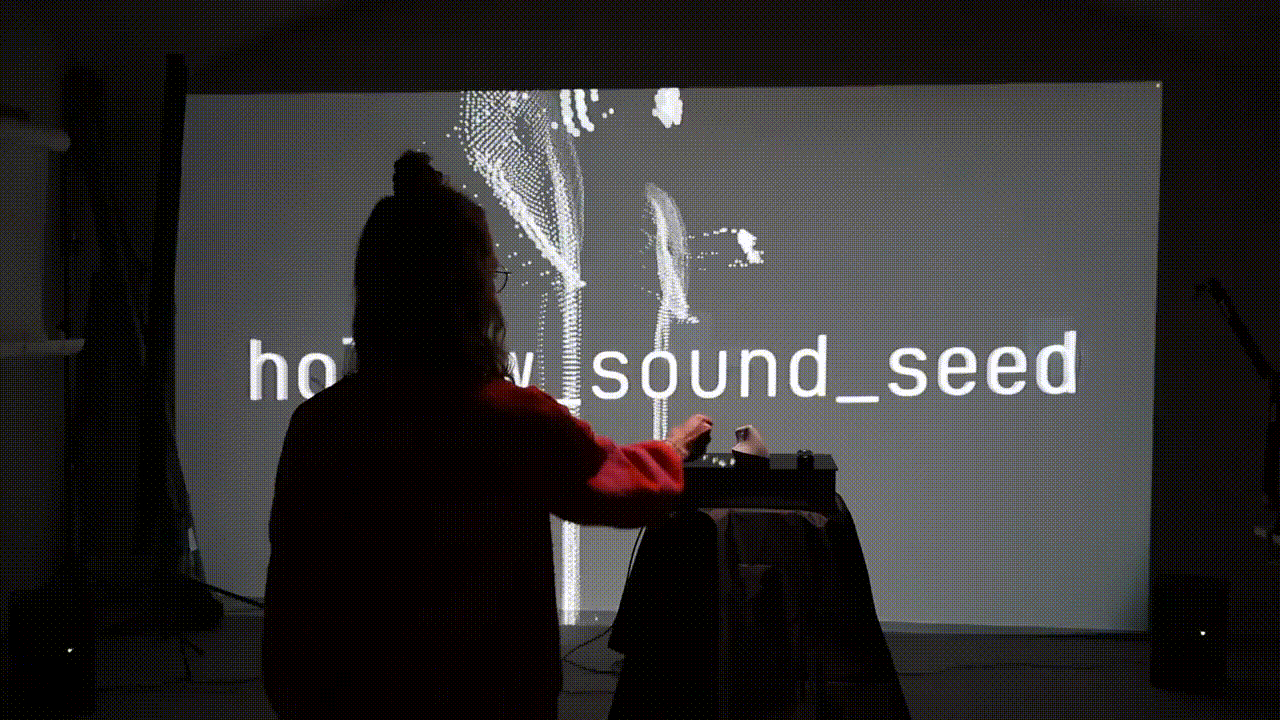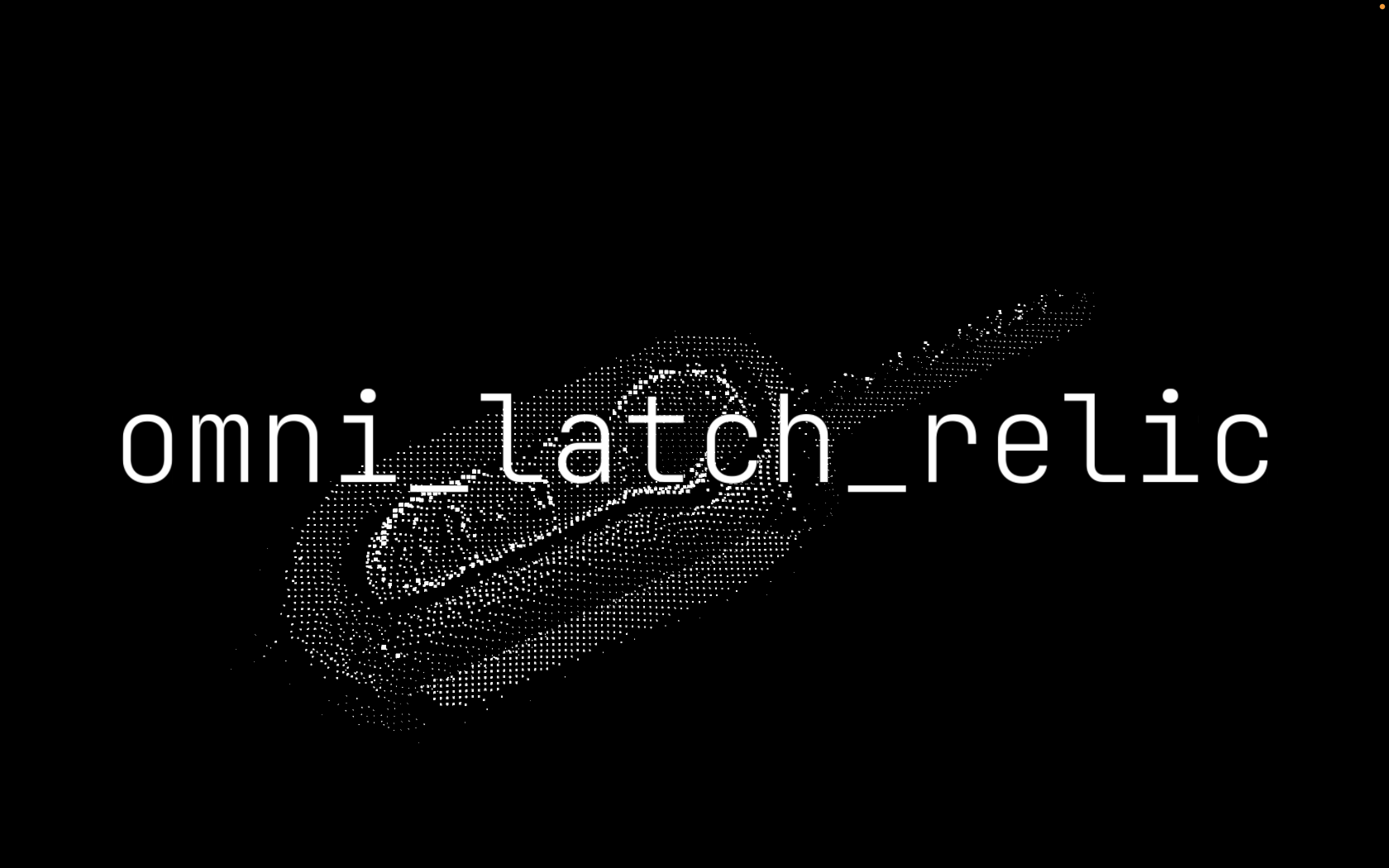TECHNO FOSSILS
Exhibition in Collaboration
with Alec Davis
︎︎︎ Concept
︎︎︎ Visual Design
︎︎︎ Sound Design
︎︎︎ Coding
︎︎︎ Physical Prototyping
︎︎︎ Room Installation
with Alec Davis
︎︎︎ Concept
︎︎︎ Visual Design
︎︎︎ Sound Design
︎︎︎ Coding
︎︎︎ Physical Prototyping
︎︎︎ Room Installation
The techno_fossils exhibition imagines the absurd ways people hundreds of years in the future might interpret our society based on the objects we leave behind. This project was developed during the Introduction to Programming course at CIID, a 4-day intensive in exploring Processing, Arduino and physical prototyping.
Technofossils are “human-made artifacts that can become part of Earth’s far-future geology”, potentially offering people generations from now a glimpse into our daily lives. For example, a cheap plastic trinket might take 500 years to decompose—could that kind of longevity be mistaken for a sign of high value?
Technofossils are “human-made artifacts that can become part of Earth’s far-future geology”, potentially offering people generations from now a glimpse into our daily lives. For example, a cheap plastic trinket might take 500 years to decompose—could that kind of longevity be mistaken for a sign of high value?

Picking up the techno fossils triggers
visual projections and audio.
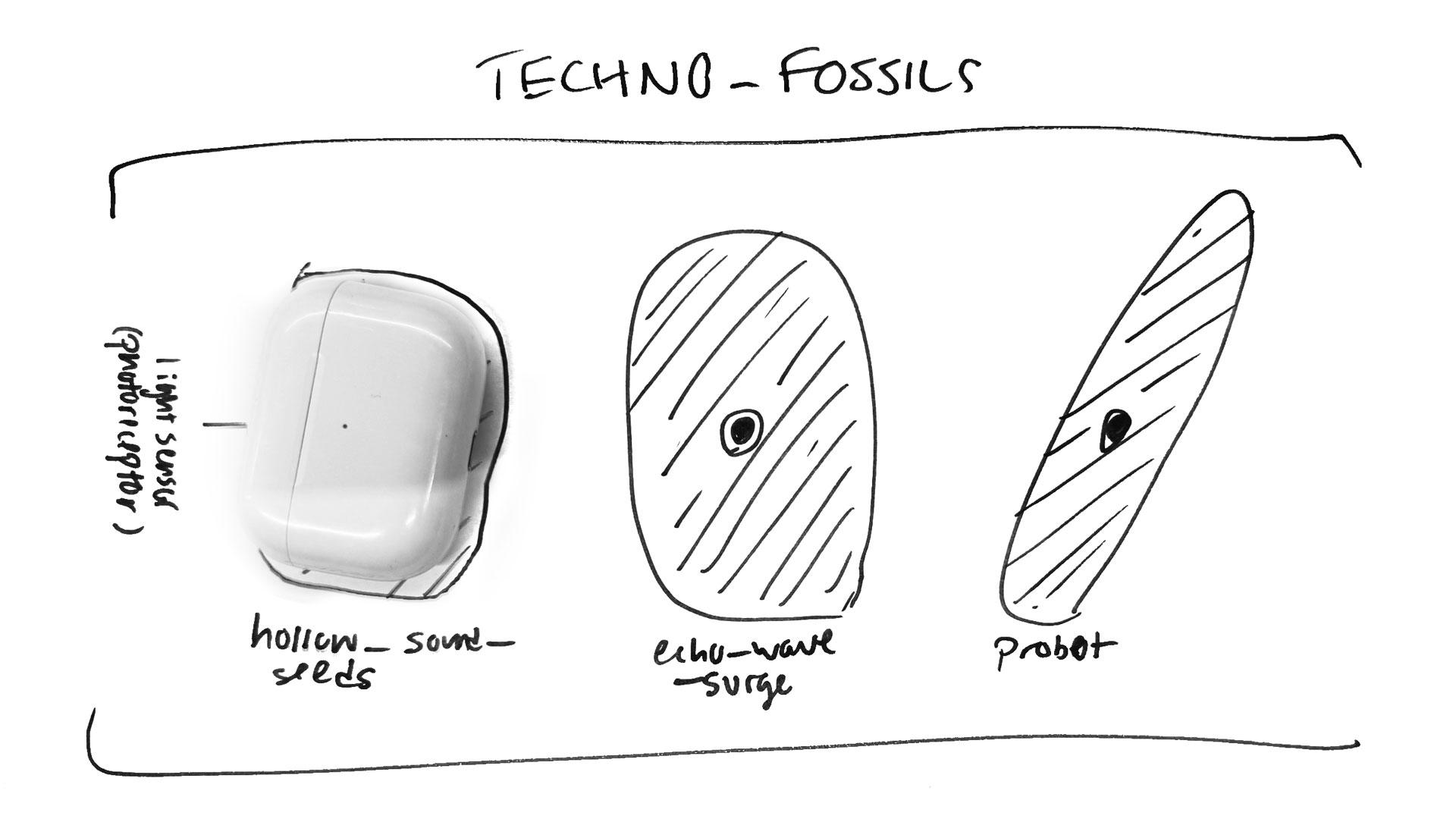
Imagining the future lives of our stuff, we pondered how everyday objects might be perceived by future generations. A plastic gadget, for instance, may take hundreds of years to decompose, offering future societies a glimpse into our daily lives.
To explore this idea, we curated an exhibition titled techno_fossils, imagining the absurd ways people hundreds of years from now might depict our society based on the objects we leave behind. We selected three items we use daily—AirPods, a car key, and a computer mouse—and created an experience that exudes futuristic kitsch.
A visitor entering the space is greeted by thumping techno music and an AI-generated voice that speaks in sync with the beat, inviting them to pick up a fossil. The “techno fossils” rest on a platform made of black acrylic and aluminum-coated plywood. Hidden within the platform is an Arduino and three photoresistors, which trigger different responses depending on which object is lifted and exposed to ambient light.
When a visitor picks up a fossil, the introductory text on the projector is replaced with a giant, spinning, 3D "deconstruction" of that object, generated using Processing code. The glossy surfaces of the platform reflect the white pixels dancing across the projector screen. A booming voice, generated using Dennis Paul's Wellen library, narrates a description based on a hypothetical misinterpretation of that fossil.
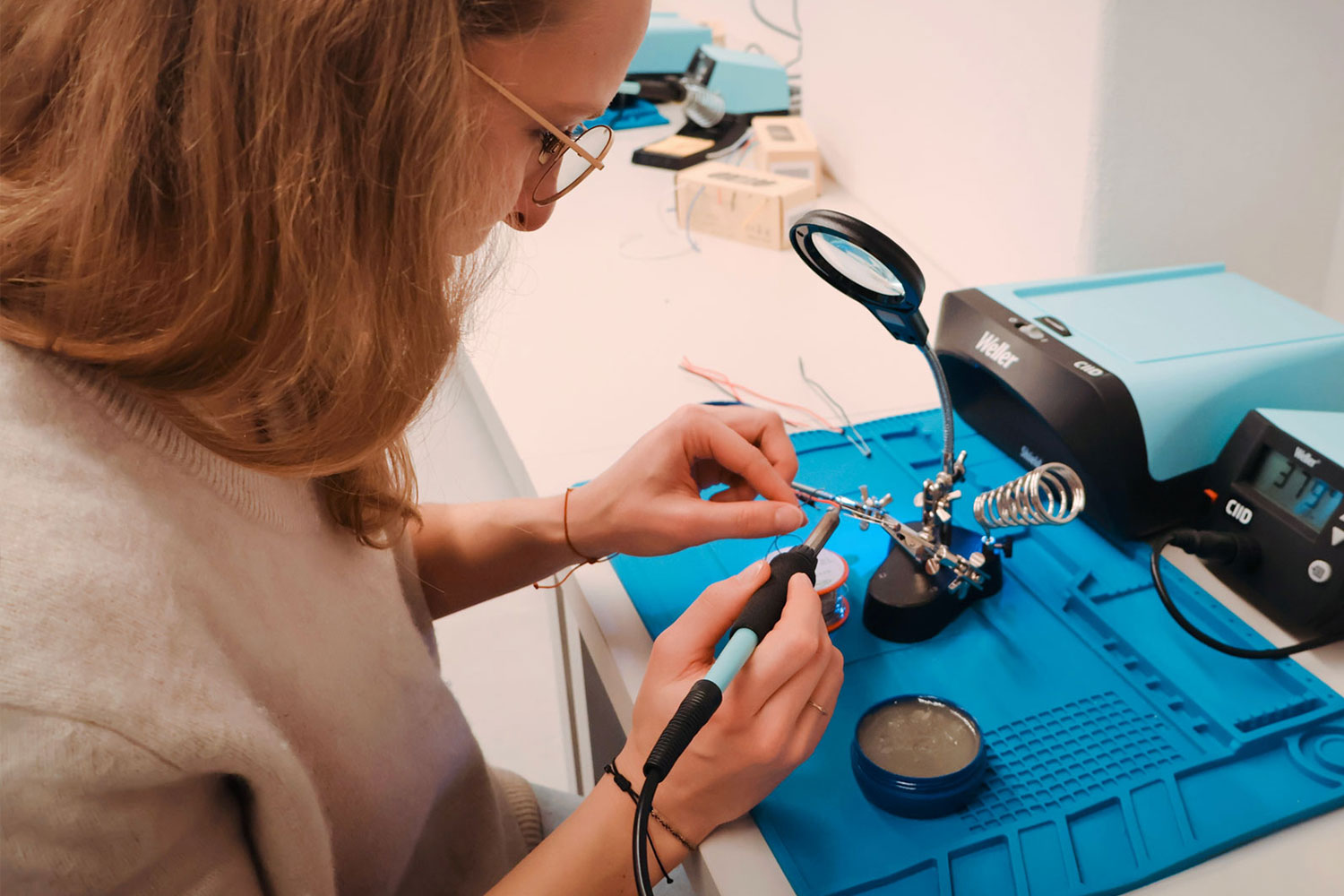
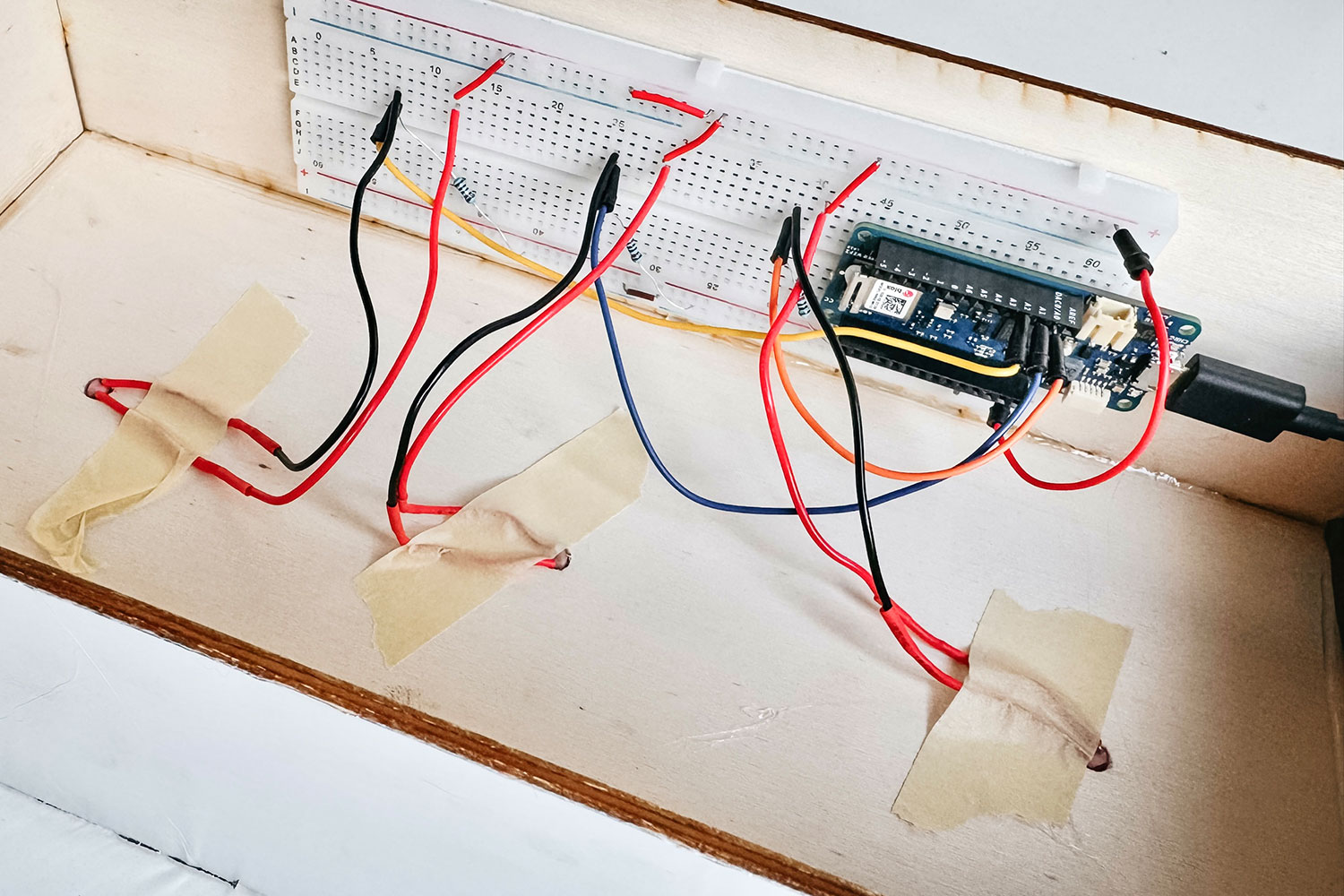
Through this project, we learned the value of simplicity, the importance of context, and how thoughtful sound design can shape an experience. The overall goal of the project is to prompt reflection on the objects we surround ourselves with and what they reveal about our values and identities.
